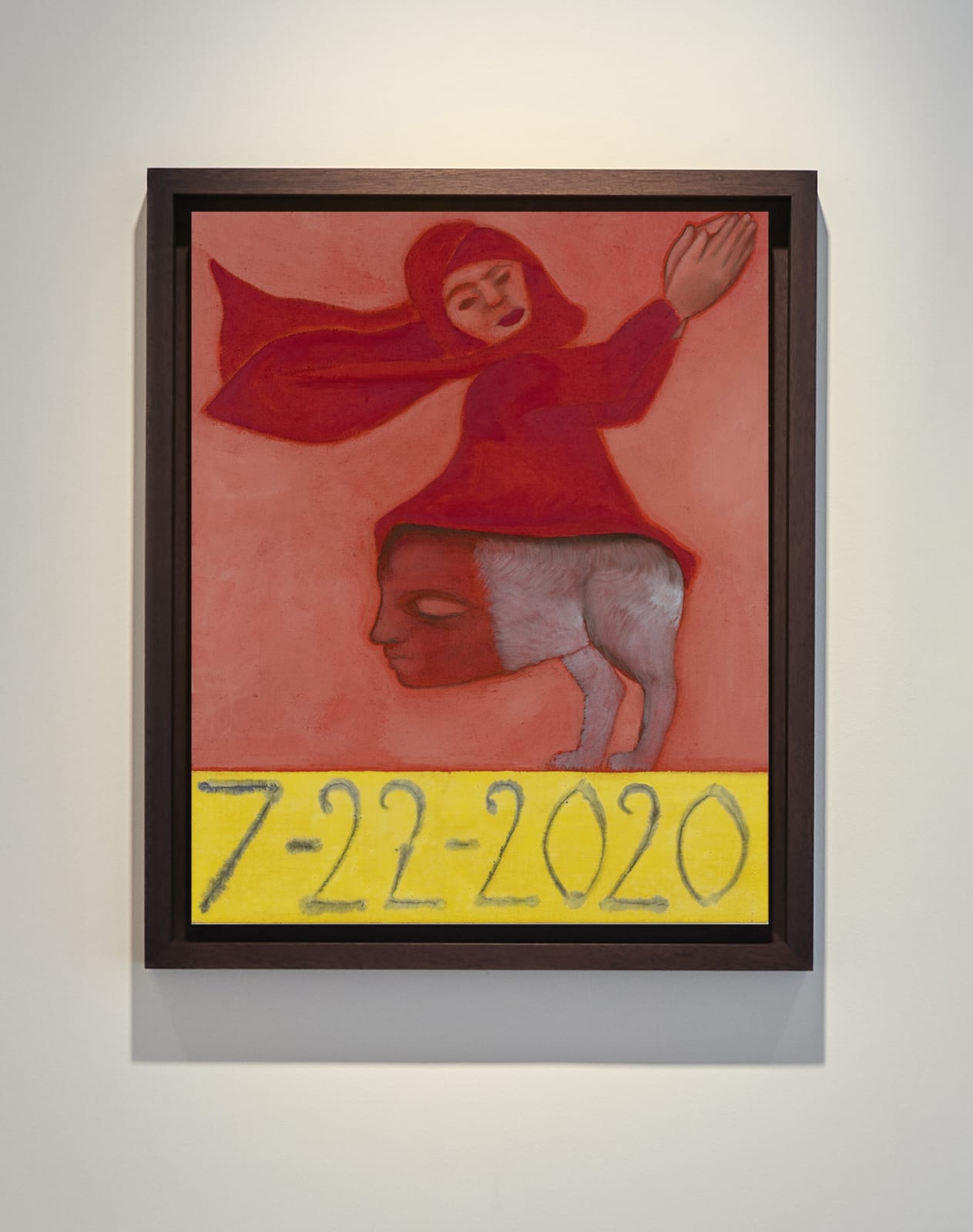
Francesco Clemente Italy, b. 1952
29 8/16 x 24 1/16 in
Framing Dimensions: 85 x 71 x 6 cm
Traditionally a ‘bestiary’ is a compendium of beasts that became popular in the Middle Ages. Medieval bestiaries were rich in symbolism and allegory, so as to teach moral lessons and to entertain, rather than to convey knowledge of the natural world.
The beasts depicted in Clemente’s paintings refer explicitily to an iconographic tradition of the dark ages: the so-called ‘crickets’, fantastic monsters, composed by human heads and body parts connected to zoomorphic elements such as legs and tails. These were a popular aspect of Gothic iconography but originate in a variety of earlier cultures from Roman to Islamic.
Clemente has always been engaged with the notion of metamorphosis and with the liminal spaces separating the inner, spiritual world from the outer, material world.
Connecting today’s dates to Medieval ‘monsters’ is perhaps a way for Clemente to call our attention to the return of ‘unreason’ in this time of enhanced crisis.
As it is often the case for Clemente, the monstrous, deformed and unnatural figures, with their seemingly ‘ funny’ appearance, are meant to manifest the unknown and make it less frightening. The disquieting images are rendered in tender and seductive colours as if to encourage us to familiarize ourselves with the absurdity of these grotesque and cruel times.
Clemente’s work constantly reinvents and confirms itself. Bestiary 2020, of all the works Clemente has made over his forty years journey through the cultures of India, Italy and America is the work that more explicitly confirms the artist’s affinity with the famous quote of Terence: 'I am human and nothing human is alien to me’.